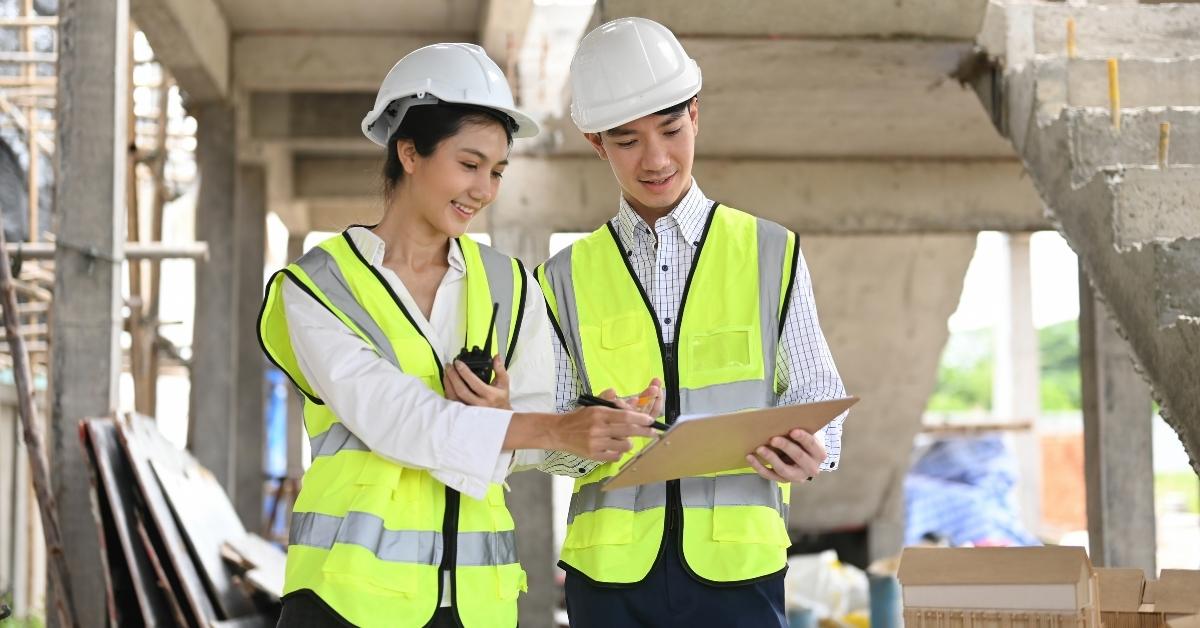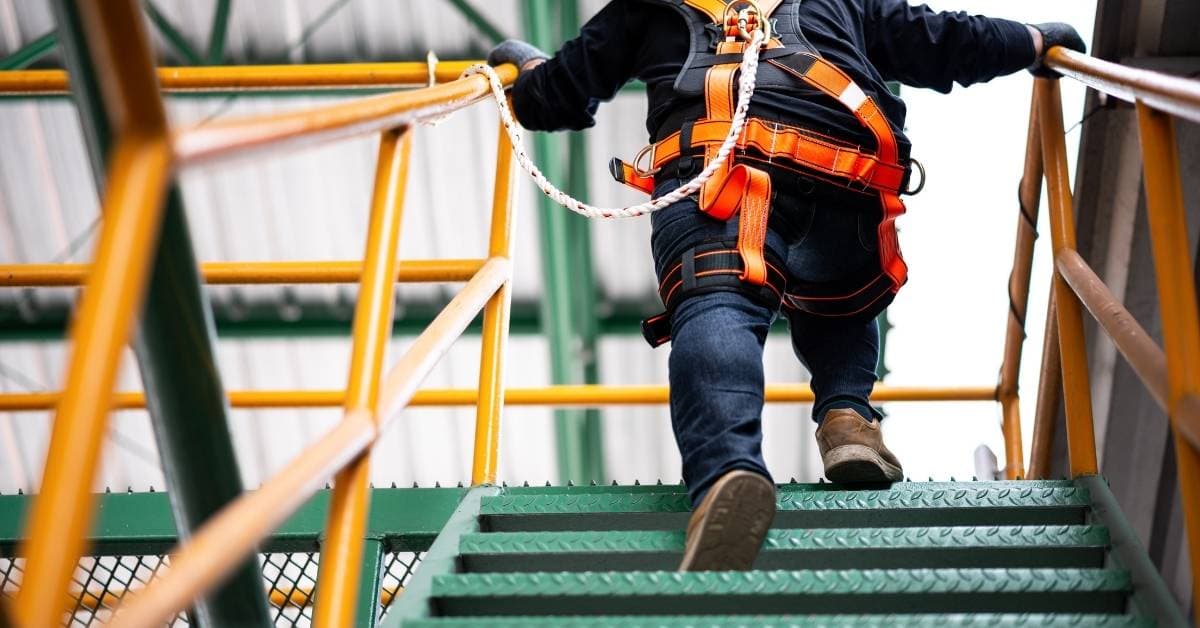
Construction Site Safety is the Heart that Contractors and Construction Companies Cannot Overlook, and When It Comes to Effective Tools for Assessing and Managing These Risks, "Construction JSA" is Considered a Widely Accepted International Standard
This article will guide everyone to understand what construction JSA is, from basic understanding, related laws, implementation procedures, to selecting appropriate equipment and materials, to help contractors truly create a safe and efficient work environment.
What is Construction JSA? And Why is it Necessary?
Job Safety Analysis or JSA is a process of studying and analyzing work procedures for each type of task, or in this case, construction JSA. It involves breaking down various tasks into smaller steps, then analyzing and identifying potential hazards that may occur in each step, and establishing appropriate preventive measures to prevent or control what might happen. This construction JSA process differs from general risk assessment as it pays attention to the details of actual work operations, including:
- Structural work: Risks from working at heights, using heavy machinery, and lifting heavy objects
- Electrical system work: Risks from electrical short circuits, explosions, and fires
- Excavation work:Risks from soil collapse, hitting utility pipes, and toxic gas formation
The Importance of Conducting Construction JSA
The importance of conducting construction JSA in various projects extends beyond protecting the safety of employees and workers. It also helps reduce costs arising from damage compensation, medical expenses, and work interruptions from accidents.
For projects with construction camps, conducting JSA becomes even more critical as it must consider safety in both work areas and workers' living quarters. Risk assessment must cover everything from construction activities, daily living, to transportation within the camp, requiring expertise in careful planning for construction JSA implementation.
Currently, leading construction companies prioritize developing construction JSA systems that can be adapted to various types of work, from structural work, renovation and extension work, public utility system work, to maintenance work. Each type of work has different risks and requirements, making a good construction JSA flexible and adjustable to actual situations.
Laws and Regulations Regarding Construction Safety
Although there are no laws in Thailand that directly specify construction JSA requirements, there are related construction laws such as the "Occupational Safety, Health and Environment Act B.E. 2554 (2011)" which requires employers to conduct workplace risk assessments and establish appropriate preventive measures. This makes construction JSA important as a tool that contractors and construction companies can use as systematic risk prevention and management measures.
Regarding the common question contractors face about which types of construction don't require permits, while some construction types may not require building permits from government agencies under the Building Control Act, they must still strictly comply with occupational safety and health laws. Creating construction JSA remains a recommended practice for work involving safety risks.
Contractors' responsibilities in complying with construction laws are extensive, ranging from providing appropriate fall protection systems, employee training, monitoring and evaluation, to reporting hazardous incidents. The law also specifies specific prohibitions for female workers, such as prohibiting women from working on scaffolding 10 meters or higher above ground, and for work at heights of 2 meters or more, safety rails or safety fences and safety harnesses must be strictly installed and used, or safety nets installed when safety rails cannot be provided.
While not a direct legal requirement, creating construction JSA is an approach that helps contractors comply with safety laws systematically and effectively. It helps ensure that all potential hazards in each step of working at heights are identified, appropriate and adequate preventive measures are established, and workers clearly understand safe work procedures before starting actual work.
Steps for Creating an Effective Construction JSA
Creating an effective construction JSA involves 4 important steps as follows:
Step 1: Select the Work to be Analyzed
Begin by selecting high-risk work or tasks with frequent accident occurrences. Consider accident history, job complexity, and potential impacts. Selecting appropriate work will help make the construction JSA effective and truly meet safety needs.
Step 2: Break Down Work Procedures into Individual Steps
Identify every work step, such as tool preparation, lifting, installation, and inspection, to analyze risks in each step. Generally, this is broken down into approximately 5-10 steps, as overly detailed division will make the JSA document complex, but overly broad division may miss important risks as well.
Step 3: Analyze Risks in Each Step
Identify potential hazards that may occur in each step in detail. If this step is missed, various hazards may remain hidden in the work. Consider hazards arising from work characteristics, environment, equipment used, construction materials, and external factors such as weather conditions, traffic, or other activities occurring in nearby areas.
Step 4: Determine Preventive Measures
Use information from the analysis in Step 3 to find ways to reduce or prevent risks, such as using personal protective equipment or improving work procedures. When establishing various preventive measures, consider the impact on work, cost-effectiveness, and speed of problem resolution.
Who Should Conduct Construction JSA?
Many people may think that conducting construction JSA is solely the responsibility of supervisors or safety officers in the project. But in reality, construction JSA should receive cooperation from various working parties to cover all dimensions of safety. Those involved in conducting construction JSA can be divided as follows:
- Supervisors: Oversee the entire work process and understand on-site work methods, with experience in solving actual problems that occurred in the past
- Safety Officers: Jointly analyze and establish accident prevention measures. Should have knowledge of laws and safety standards to provide appropriate recommendations
- Workers: Those who best understand problems and risks on-site. Can provide real work information and problems encountered in actual practice
Safety Materials and Equipment Connected with JSA
Material assessment in JSA is an important step that must consider quality, standards, and suitability for use, because using substandard materials often results in more safety problems than projects using quality materials. However, these hazards can depend on several factors, such as the type of materials used, the usage environment, and quality control measures. Construction JSA risk assessment from material use must therefore be done thoroughly, including testing and training workers to understand correct usage methods.
Choosing standard materials not only helps reduce the risk of accidents but also helps make work efficient and provides long-term investment
BS Standard Scaffolding and Construction JSA
For BS Standard scaffolding that is strong, durable, and suitable for various construction and maintenance work, there are several requirements in construction JSA that must be followed, including:
- Structural Design: Must comply with engineering principles and be certified by an engineer
- Load Capacity Calculation: Specify the maximum weight that can be safely supported, both from workers and various tools and equipment
- Fall Protection System Installation: Complete installation of guardrails, including top rails, mid-rails, and toe boards
- Regular Condition Inspection: Scheduled inspections with recorded results
For second-hand BS Standard scaffolding, construction JSA risk analysis must be particularly stringent, including:
- Usage History: Details of past use and frequency of use
- Service Life: Period of use compared to recommended service life
- Structural Condition: Inspection for damage to main structure and components
- Strength Test Results: Load-bearing and impact testing according to standards
Every scaffolding set must have signs displaying maximum load capacity, installation date, and most recent inspection date.
Using second-hand BS Standard scaffolding, while significantly reducing costs, requires ensuring that the installed scaffolding can support weight and impact forces according to standards and usage requirements.Second hand BS Standard scaffolding แม้จะช่วยลดต้นทุนได้ไม่น้อย แต่ก็ต้องมั่นใจว่านั่งร้านที่ติดตั้งจะสามารถรับน้ำหนักและแรงกระแทกได้ตามมาตรฐานและการใช้งาน
Personal Protective Equipment (PPE) and Construction JSA
Specifying necessary Personal Protective Equipment (PPE) for each work step according to construction JSA must be specific and appropriate to potential risks, including:
- Type of Equipment: Must be clearly specified, such as full-body safety harnesse
- Required Standards: International standards such as CE, ANSI, or TIS
- Usage Methods: Correct wearing procedures and adjustment methods
- Maintenance: Cleaning methods, scheduled condition inspections, and criteria for replacing new equipment
Scheduled inspection and maintenance of safety equipment is an important part of JSA that is often overlooked. Equipment that is not properly maintained may deteriorate and fail to protect users during emergencies. Effective integration of PPE requirements with the JSA system requires training, usage monitoring, and continuous equipment updates.
Creating construction JSA is essential for establishing a safe work environment, reducing accident risks, and increasing project efficiency. Serious implementation of JSA, while not a direct legal requirement, is a good approach that helps systematically comply with safety laws and is a worthwhile long-term investment in reducing accident costs, increasing work efficiency, and building a good reputation for the organization.
Effective construction JSA implementation requires quality, standard equipment, especially scaffolding and safety equipment that are crucial for working at heights. Choosing equipment from reliable suppliers for purchase andBS scaffolding rental along with professional teams forBS scaffolding installation service according to safety standards, will help JSA operations truly achieve accident prevention goals.

SC Scaffolding and Equipment Co., Ltd. is an importer and distributor of BS STANDARD scaffolding pipes and equipment, both new and second-hand, and a major distributor of second-hand scaffolding equipment in Thailand. Quality is guaranteed for every piece, with factory certificates. In addition, we also provide services.
SC Scaffolding and Equipment Co., Ltd. is an importer and distributor of BS STANDARD scaffolding pipes and equipment, both new and second-hand, and a major distributor of second-hand scaffolding equipment in Thailand. Quality is guaranteed for every piece, with factory certificates. In addition, we also provide services.BS scaffolding rental and buy back BS scaffolding along withBS scaffolding installation service and designed with a professional team ready to provide service 24 hours a day, no holidays.
Contact or inquire for more information at
Phone: 0854467877, 021257199
Line: @thitimark
Email sc.scaffolding29@gmail.com
Open daily from 7:00 AM to 5:00 PM.
